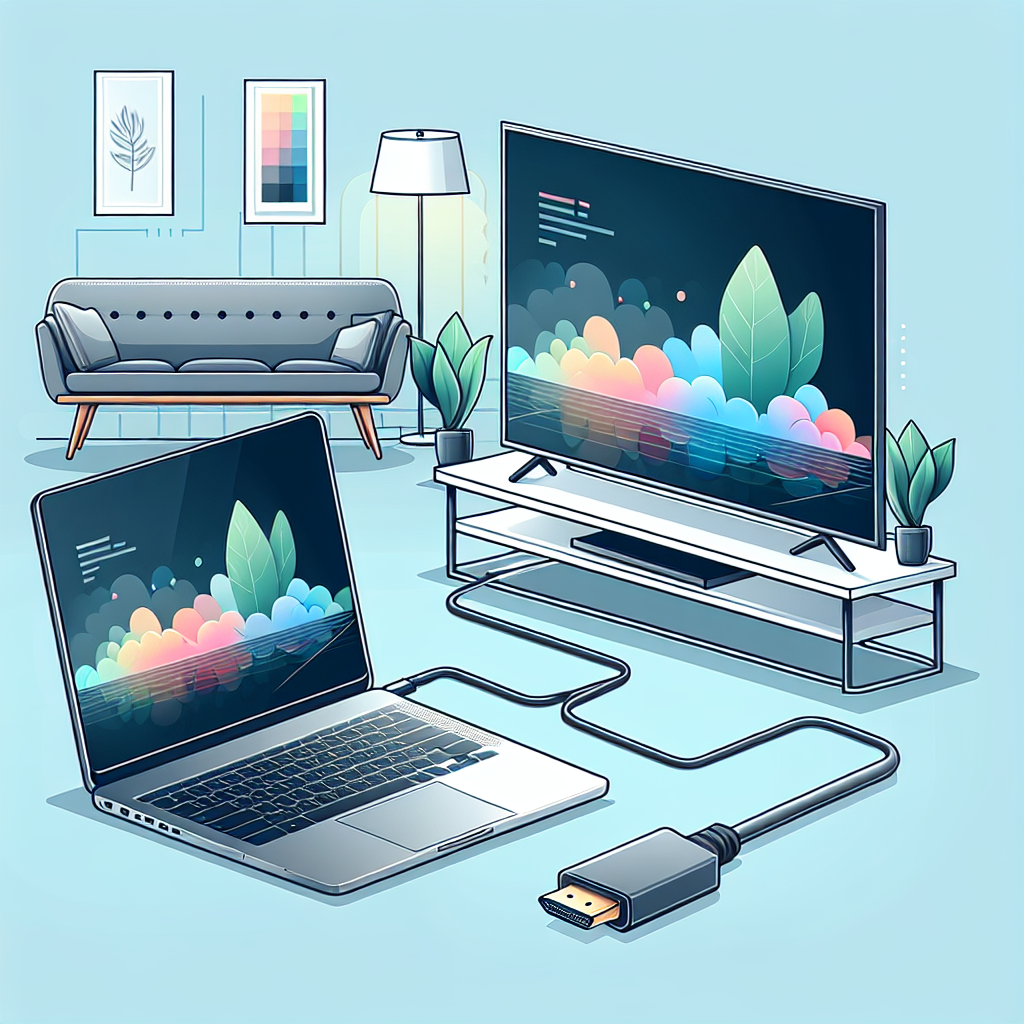Introduction
Connecting a laptop to a TV can enhance your viewing experience by allowing you to display content on a larger screen. Whether you’re watching movies, giving a presentation, or simply browsing, knowing how to hook up your laptop to a TV is essential. This guide will walk you through various methods to achieve this using HDMI, VGA, wireless connections, and more.
Method 1: Using an HDMI Cable
An HDMI cable is one of the most straightforward ways to connect your laptop to a TV. HDMI supports both audio and video, providing high-definition output.
Steps to Connect Using HDMI:
- Turn off both your TV and laptop.
- Connect one end of the HDMI cable to the HDMI port on your laptop.
- Connect the other end to an available HDMI input port on your TV.
- Turn on both devices.
- Use your TV remote to select the correct HDMI input source.
- Your laptop screen should now be mirrored on your TV.
Method 2: Using a VGA Cable
If your laptop or TV doesn’t have an HDMI port, a VGA cable can be used. Note that VGA only supports video, so you’ll need a separate audio solution.
Steps to Connect Using VGA:
- Turn off both your TV and laptop.
- Connect one end of the VGA cable to the VGA port on your laptop.
- Connect the other end to the VGA input on your TV.
- Turn on both devices.
- Use your TV remote to select the correct VGA input source.
- Your laptop screen should now be mirrored on your TV.
Audio Setup for VGA:
- Connect your laptop to your TV or external speakers using a 3.5mm audio cable.
- Ensure the audio output is correctly set in your laptop’s sound settings.
Method 3: Using Wireless Connections
Wireless connections offer more flexibility without the clutter of cables. Methods include using built-in wireless display technologies or external devices like Chromecast.
Using Miracast:
- Ensure both your TV and laptop support Miracast.
- On your laptop, go to Settings > Devices > Connected devices.
- Select ‘Add a device’ and choose your TV from the list.
Using Chromecast:
- Plug the Chromecast device into an available HDMI port on your TV.
- Ensure both your laptop and Chromecast are connected to the same Wi-Fi network.
- Open the Chrome browser on your laptop. Click on the three dots in the upper right corner and select ‘Cast.’
- Select your Chromecast device as the destination.
- Your browser tab will now be mirrored on your TV. For full screen, select ‘Cast desktop.’
Method 4: Using USB-C or Thunderbolt
Modern laptops often come with USB-C or Thunderbolt ports, which can carry video signals with the right adapter.
Steps to Connect Using USB-C/Thunderbolt:
- Turn off both your TV and laptop.
- Connect the USB-C/Thunderbolt to HDMI or DisplayPort adapter to your laptop.
- Attach an HDMI or DisplayPort cable from the adapter to the TV.
- Turn on both devices.
- Select the correct input source on your TV.
- Your laptop screen should now be mirrored on your TV.
Tips for a Successful Connection
- Resolution Adjustment: Adjust the display settings on your laptop to match your TV’s resolution for optimal clarity.
- Update Drivers: Ensure your laptop’s graphics drivers are up to date for the best performance.
- Check Ports: Make sure the ports and cables are clean and undamaged.
Conclusion
Connecting your laptop to a TV is a convenient way to enjoy your digital content on a larger screen. Whether using HDMI, VGA, wireless methods, or USB-C/Thunderbolt, there are various ways to achieve this. By following these methods, you can ensure a seamless and enjoyable viewing experience.




